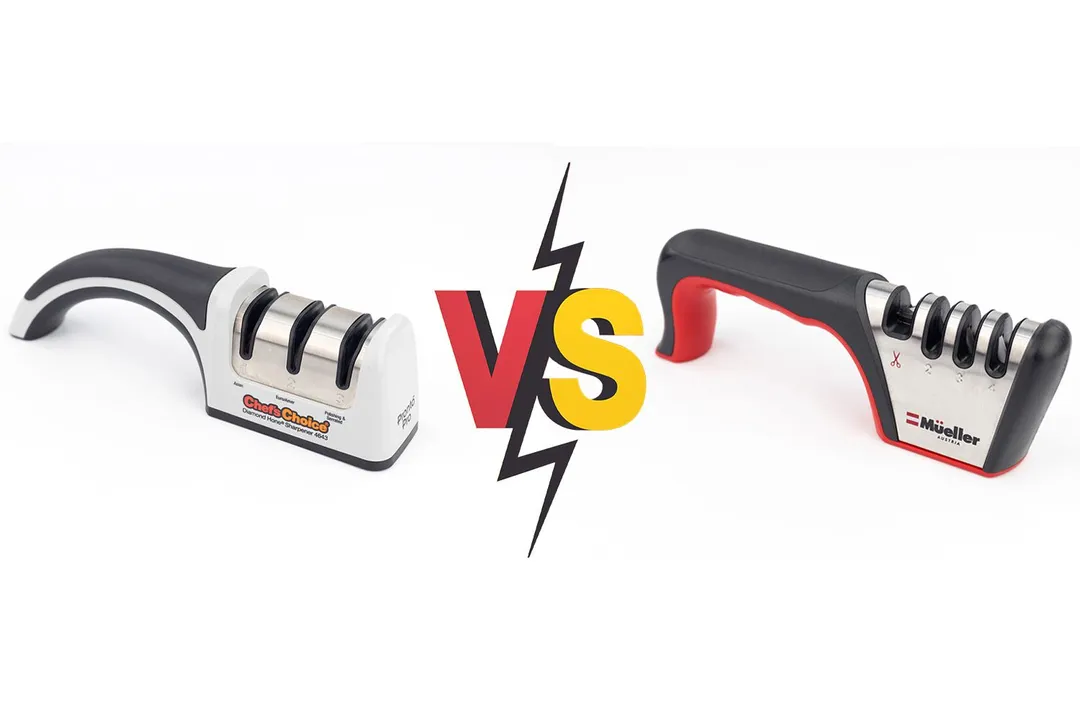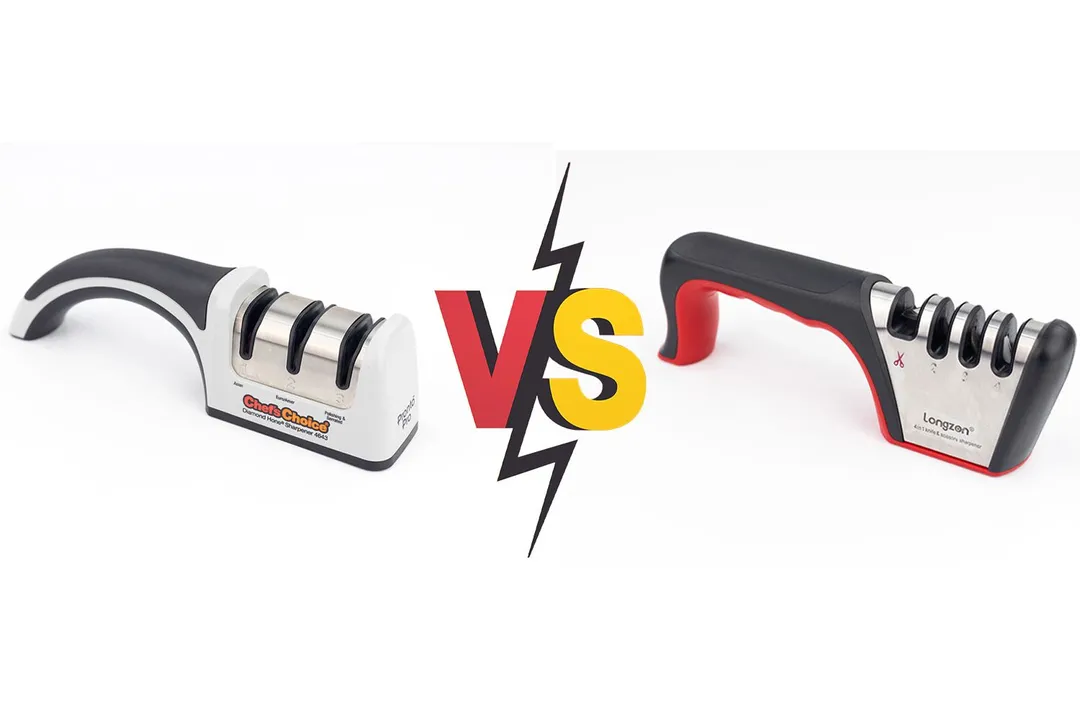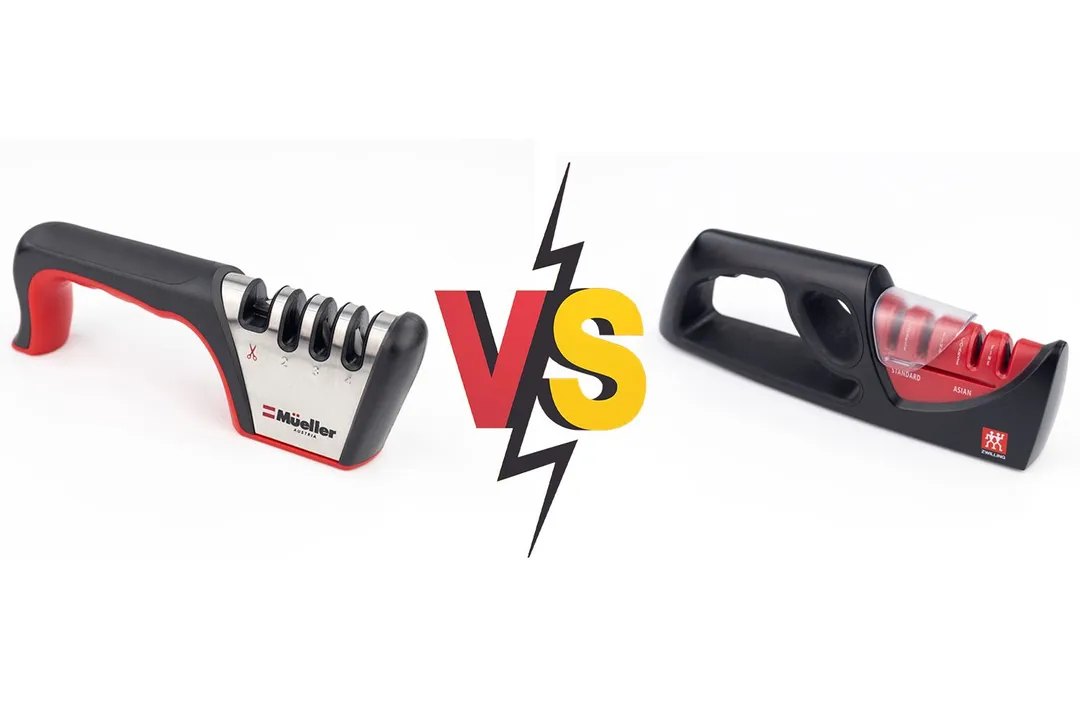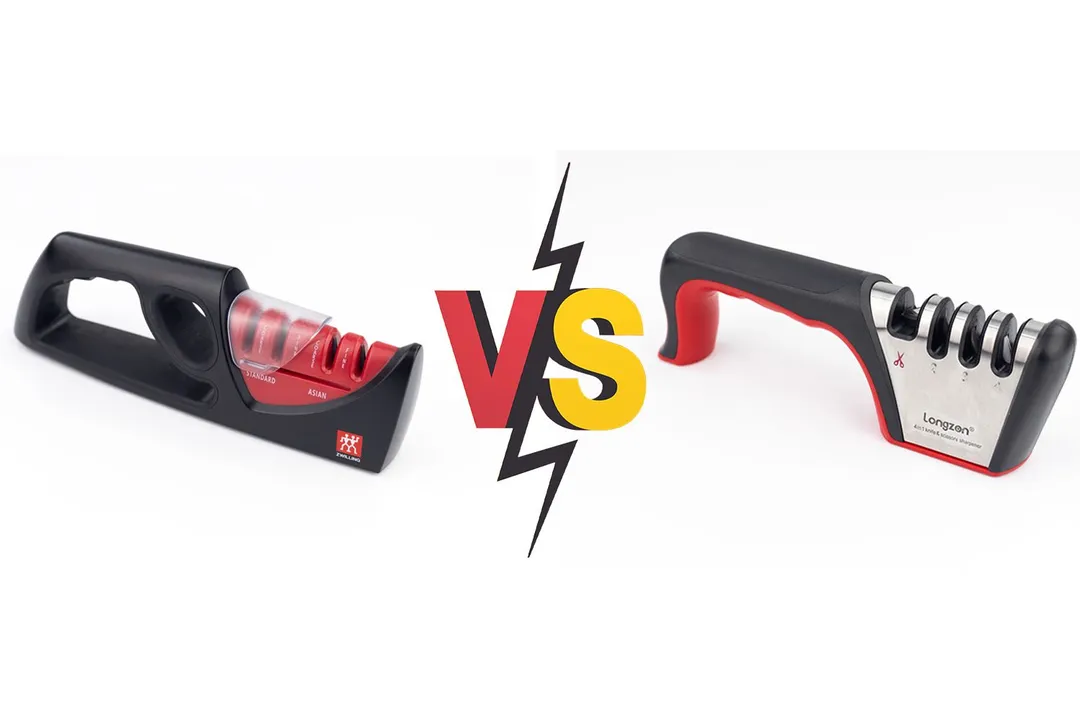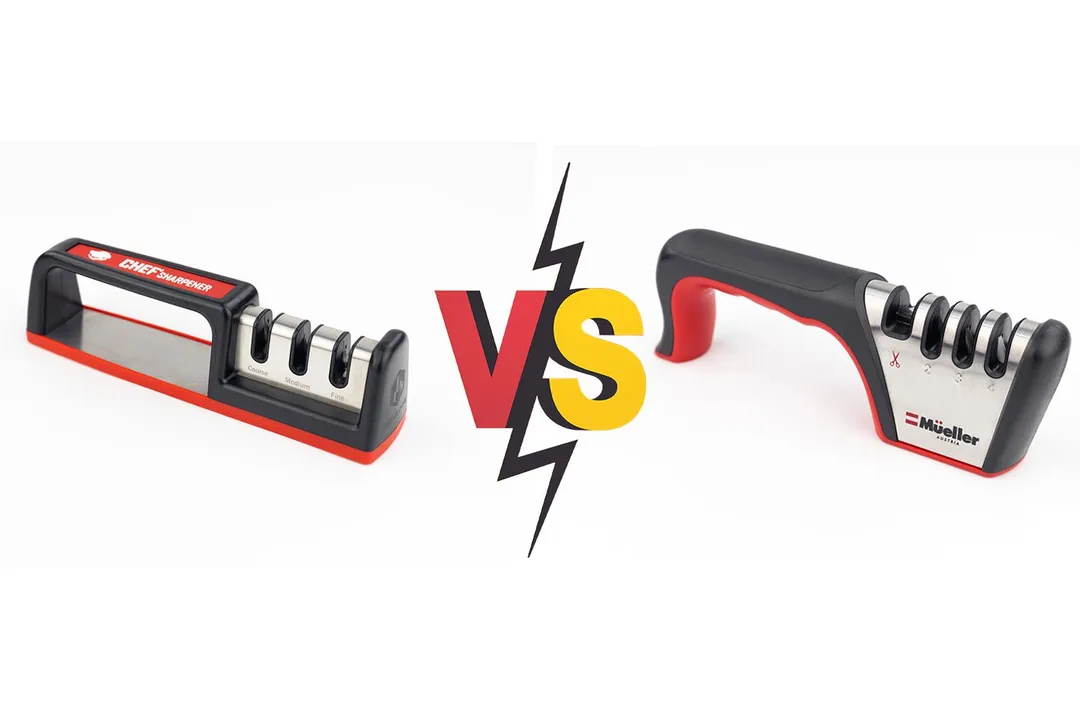Our recommendations are made independently through Research & Testing. We may receive commissions from purchases made via our links.
Mueller 4-Stage vs Longzon 4-Stage Sharpener Side-by-Side Comparison
Despite the resemblance they bear to each other, the Mueller and the Longzon actually have very different sharpening styles.
Mueller 4-Stage
Tested Using Methodology v1.1Longzon 4-stage
Tested Using Methodology v1.1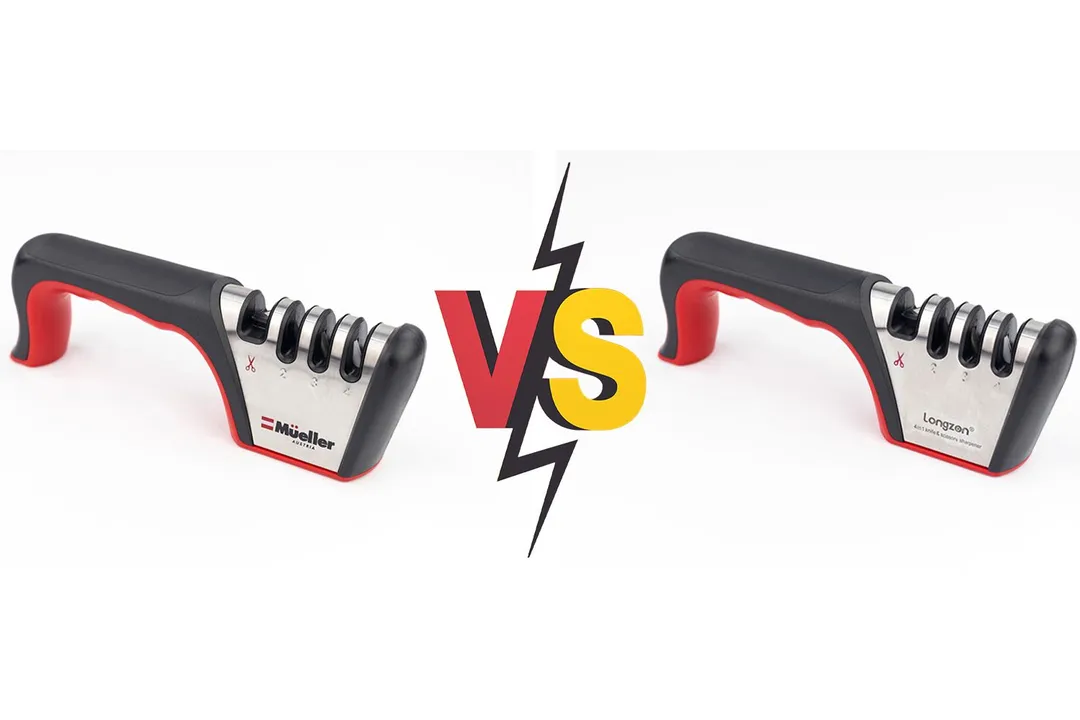
Overall Verdict
Apart from their logos, the Mueller 4-stage and the Longzon 4-stage sharpeners look identical. They have a robust build and sturdy construction. Both feature three sharpening slots for kitchen knives and one for scissors. Both sharpeners suffer slightly from a high center of gravity.
When put through the test of sharpening, interestingly, the sharpeners garnered very different results. The Mueller compromised the knife’s edge for quick sharpness, while the Longzon prioritized a smooth, shiny edge over sharpening time and serviceability.
In the world of ‘convenience’ manual sharpeners, the one that makes the knife cut first has an edge, so the Mueller seems to be the more practical choice.
Pros & Cons
- Strong construction, pretty coloring
- Quick sharpening
- Scissor slot
- Ease of use
- Sleek design
- Substantial, accommodative size
- Fine, smooth knife edge
- Inclusion of protective gloves
- Slot for scissors
- High center of gravity
- Harsh on the knife edge
- Tall base
- Slow sharpening
- Ineffective slot layout
Key Specs
Where to Buy
*You help support HealthyKitchen101's product testing and reviews by purchasing from our retail partners.
Analysis and Test Results
Performance
Sharpening Time to Cut a Lemon
Material Retention


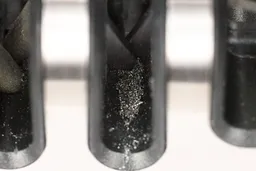
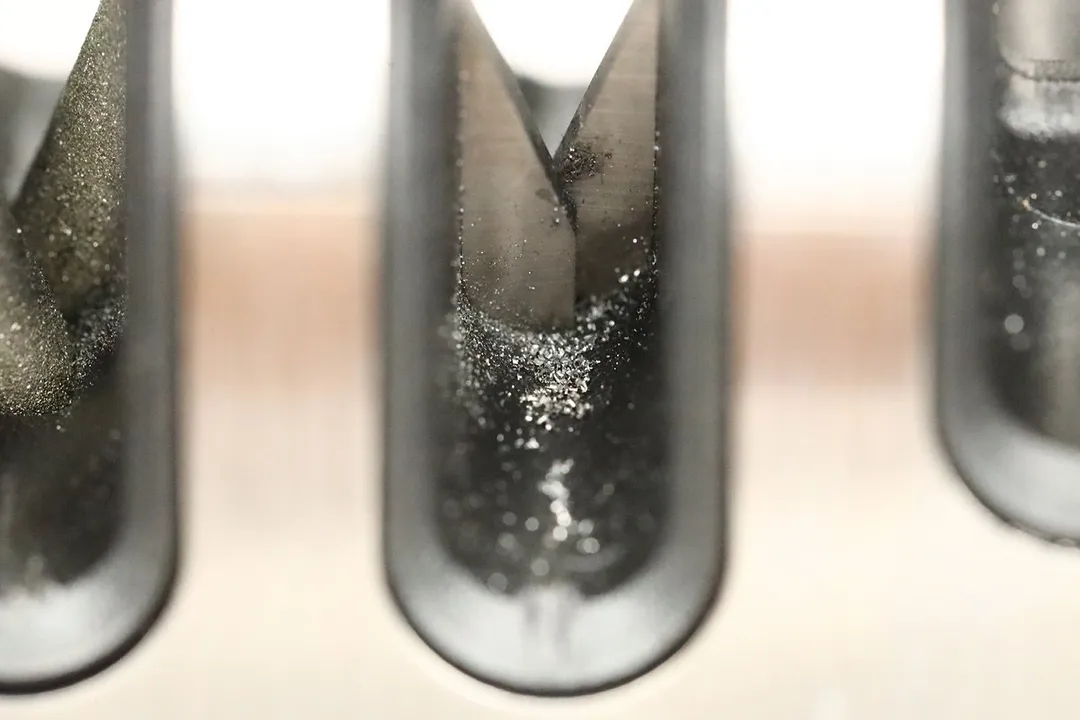


Maximum Sharpness Achieved
Edge Smoothness
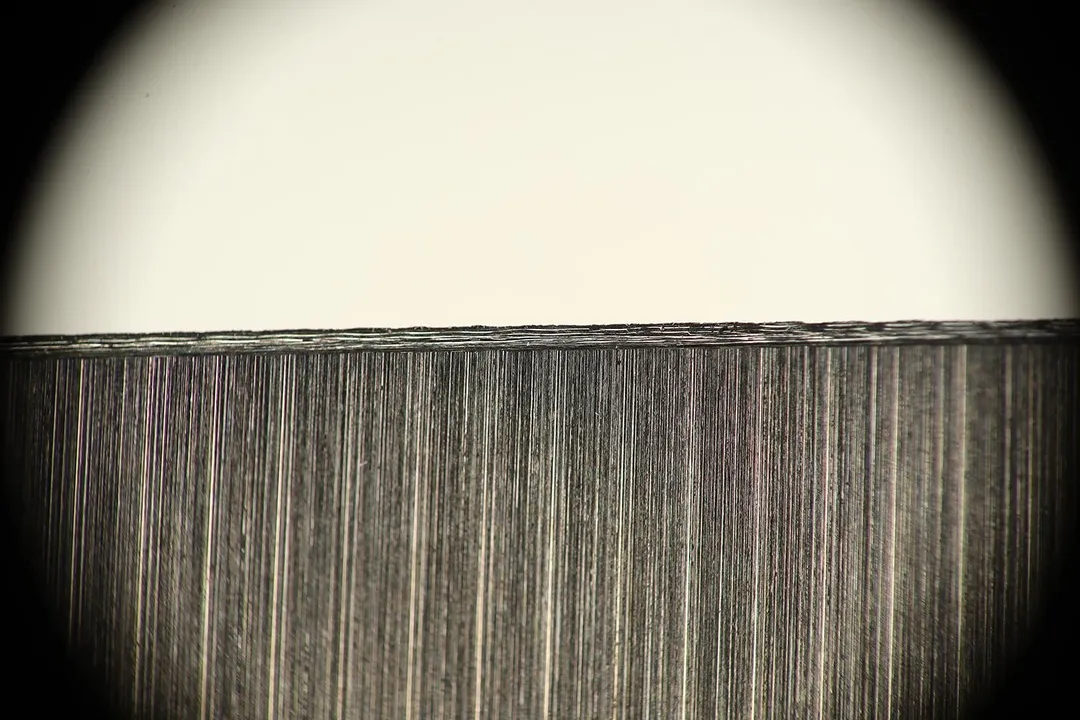
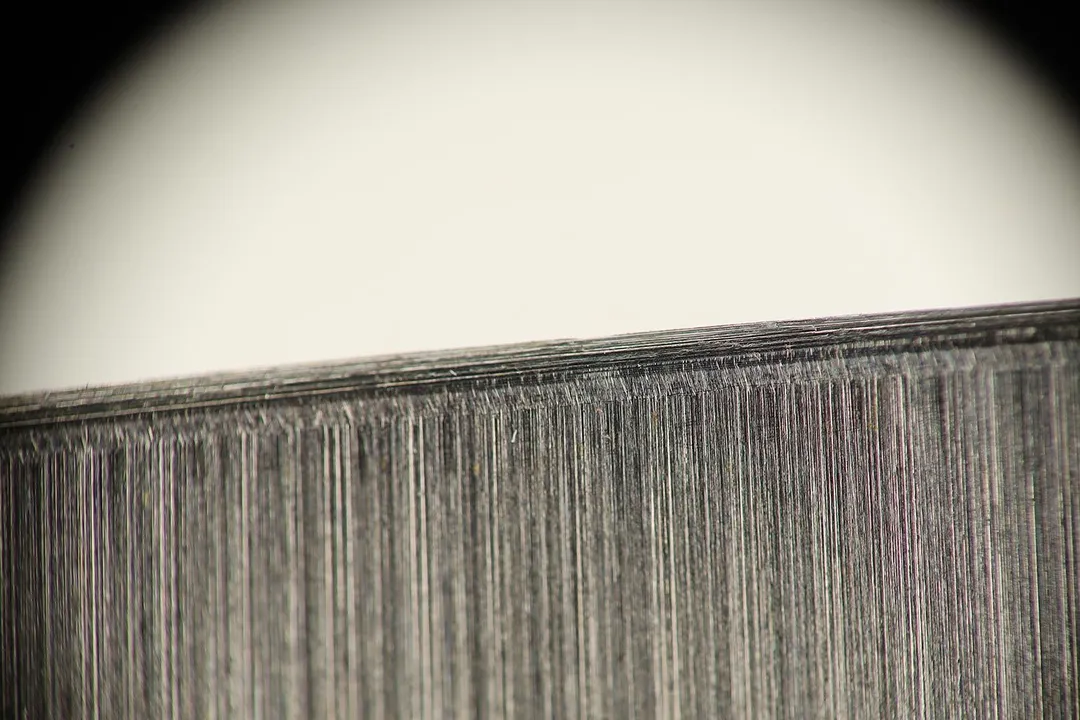
Design
In the Box
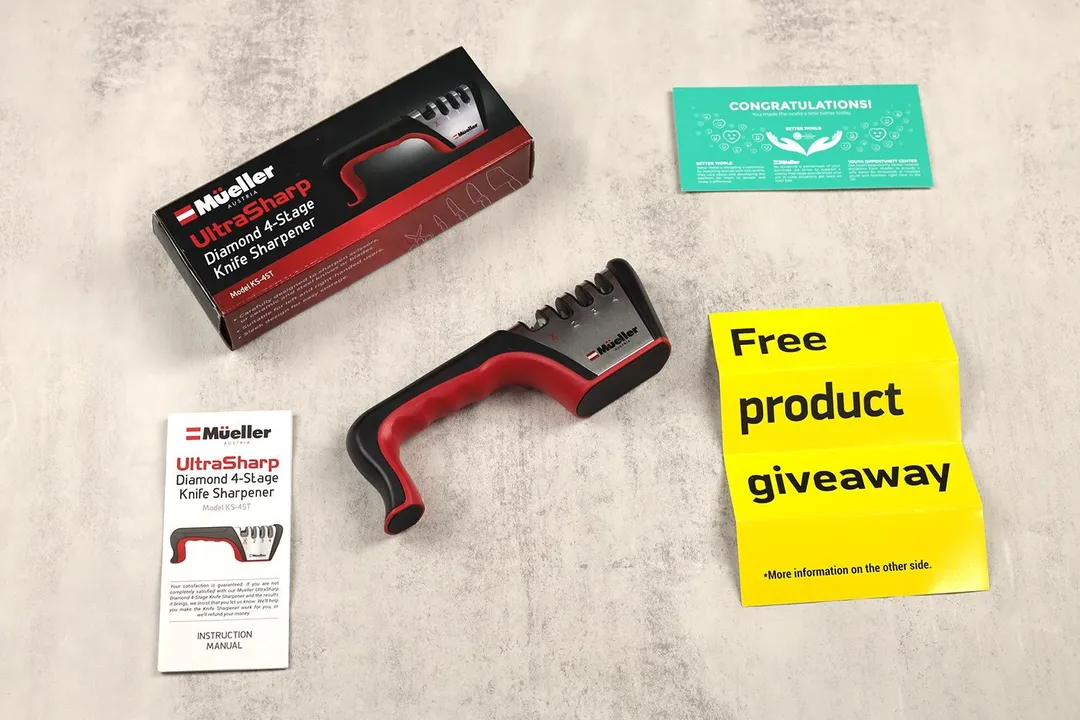
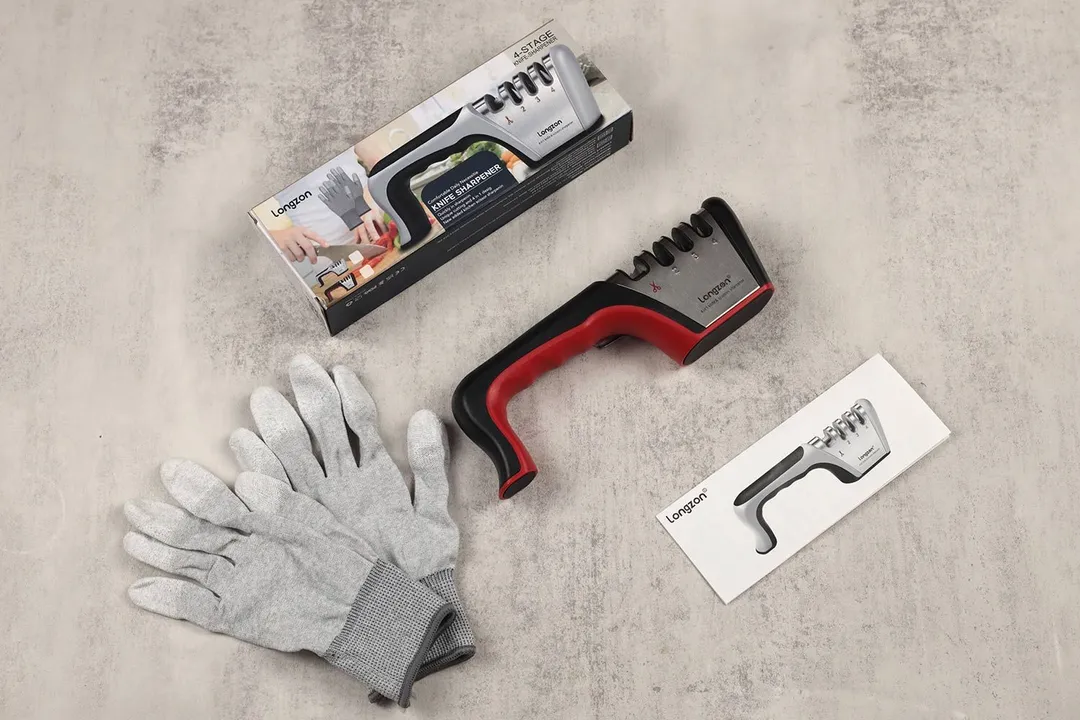
Dimensions
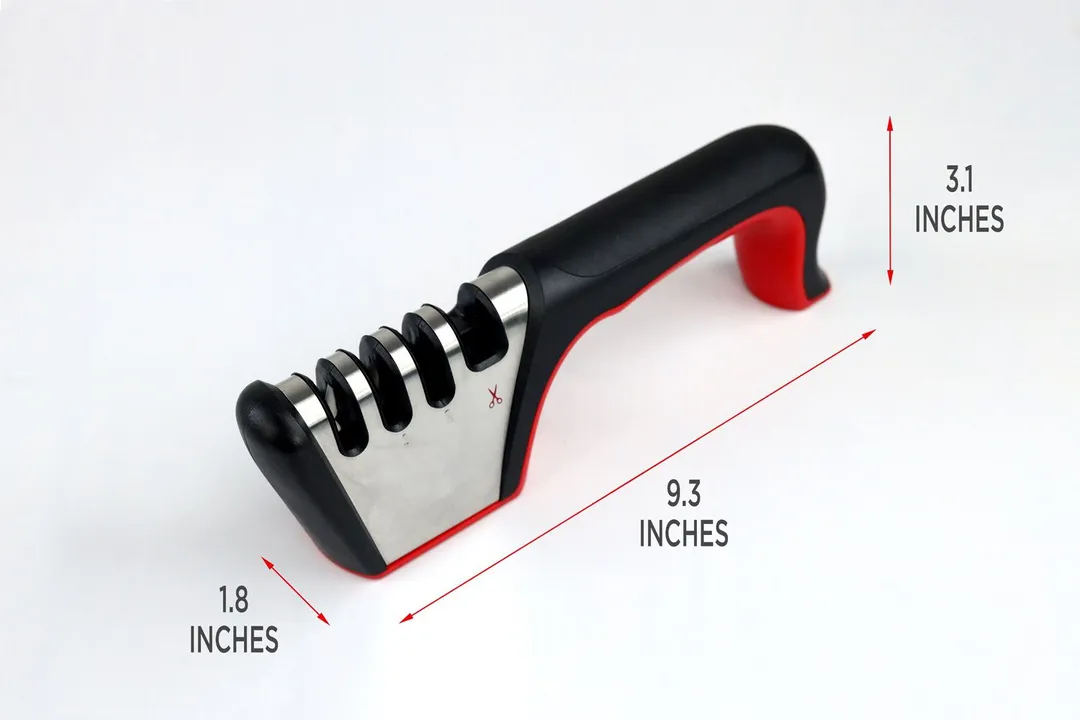
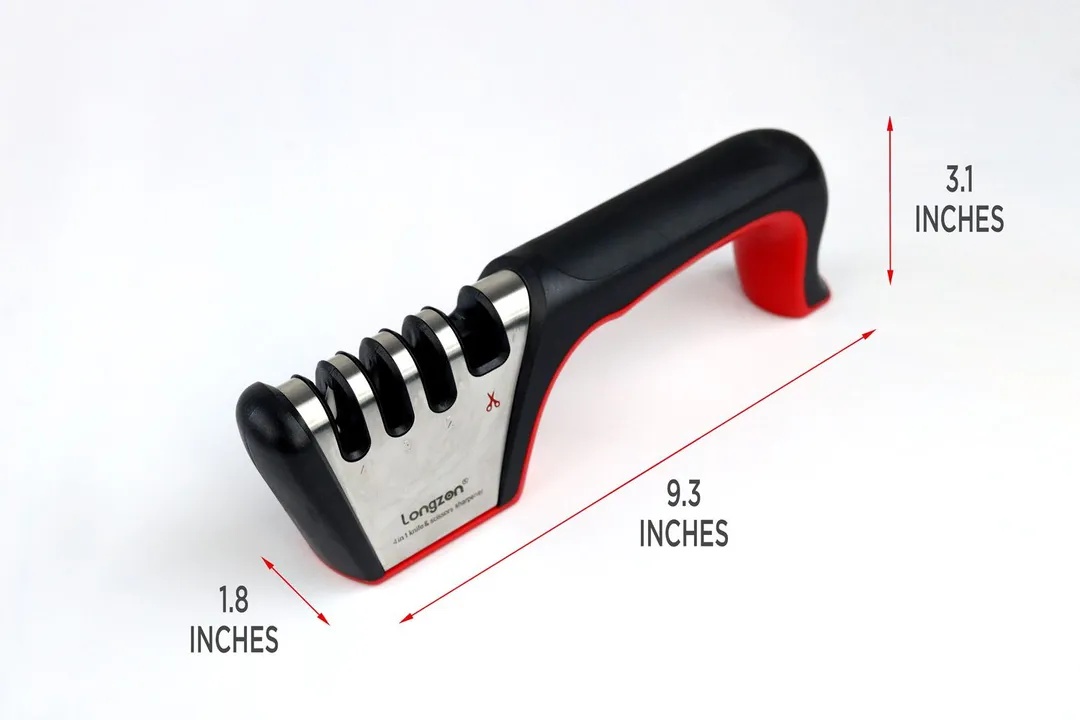
Build Quality
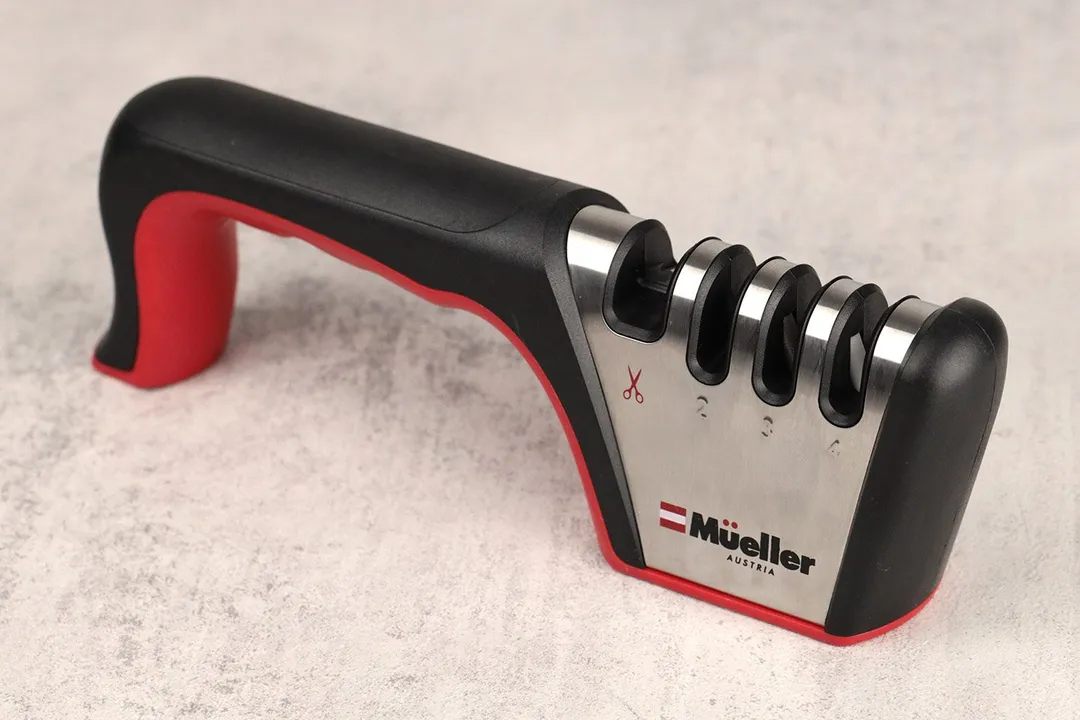

Working Section
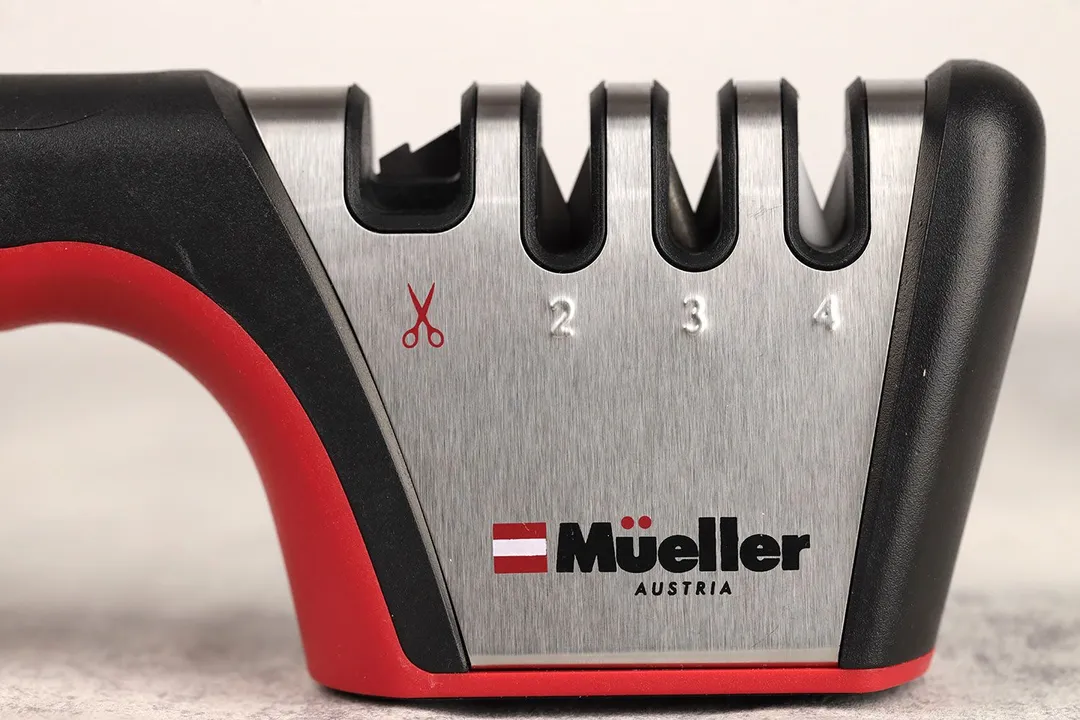
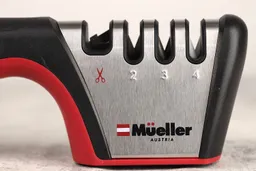
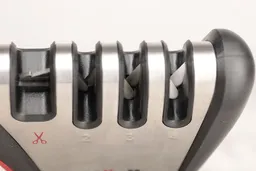
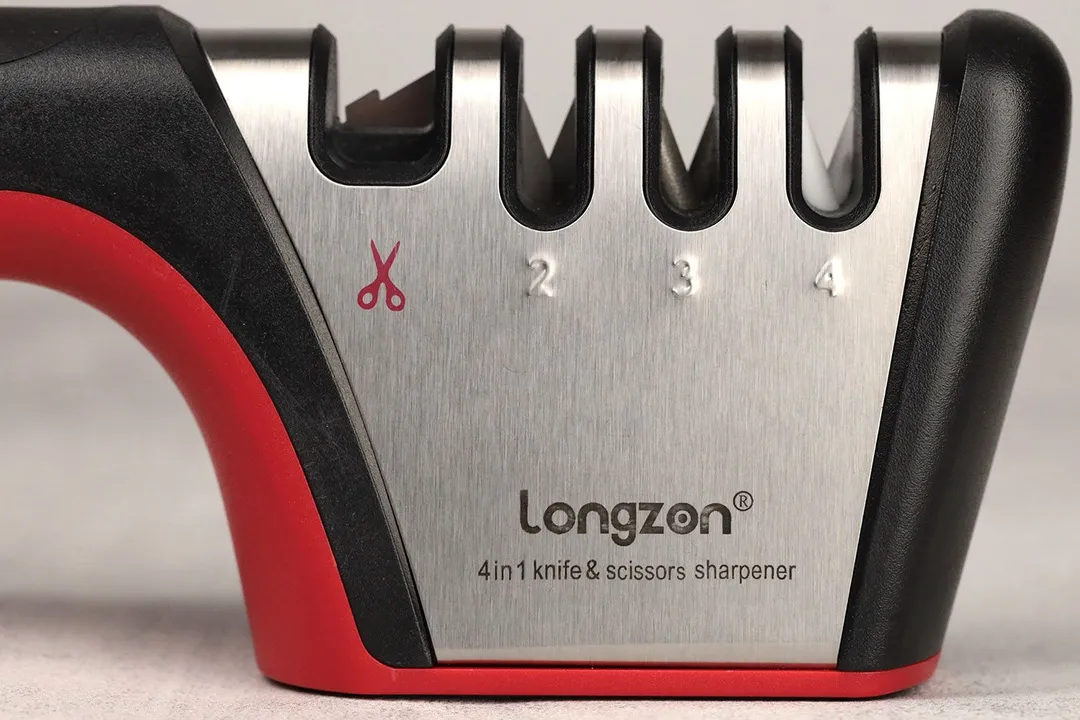
Base

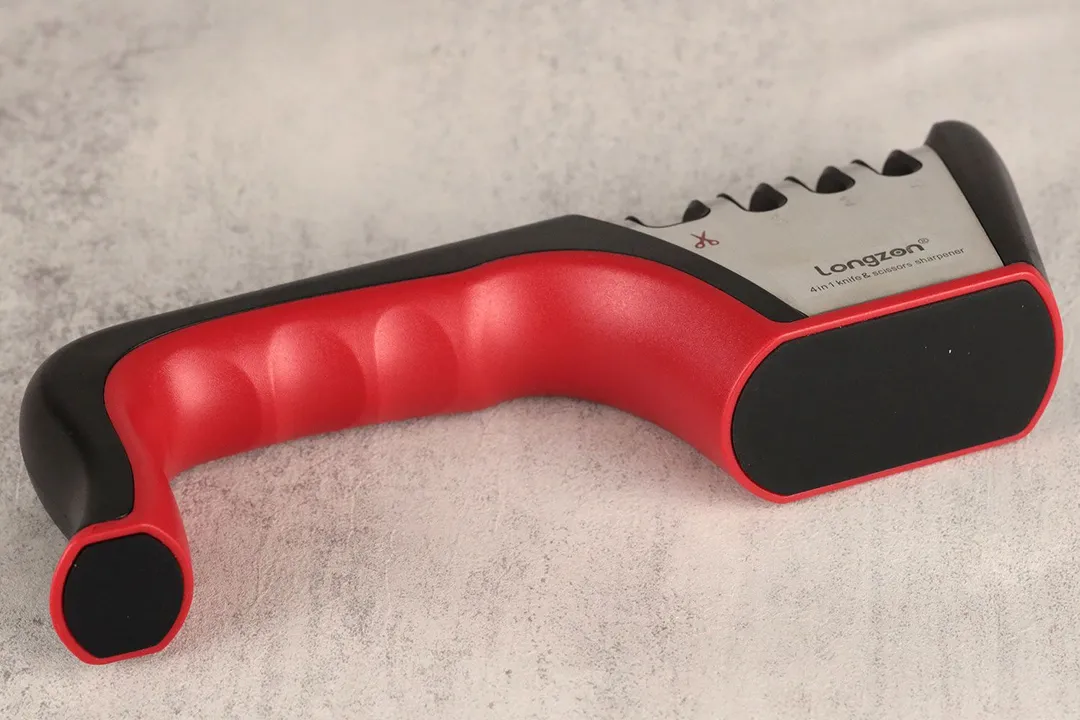
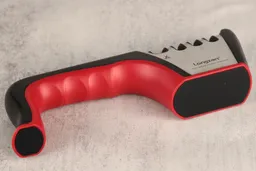
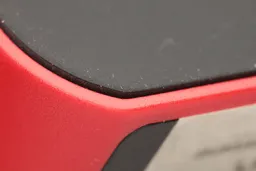
Grip
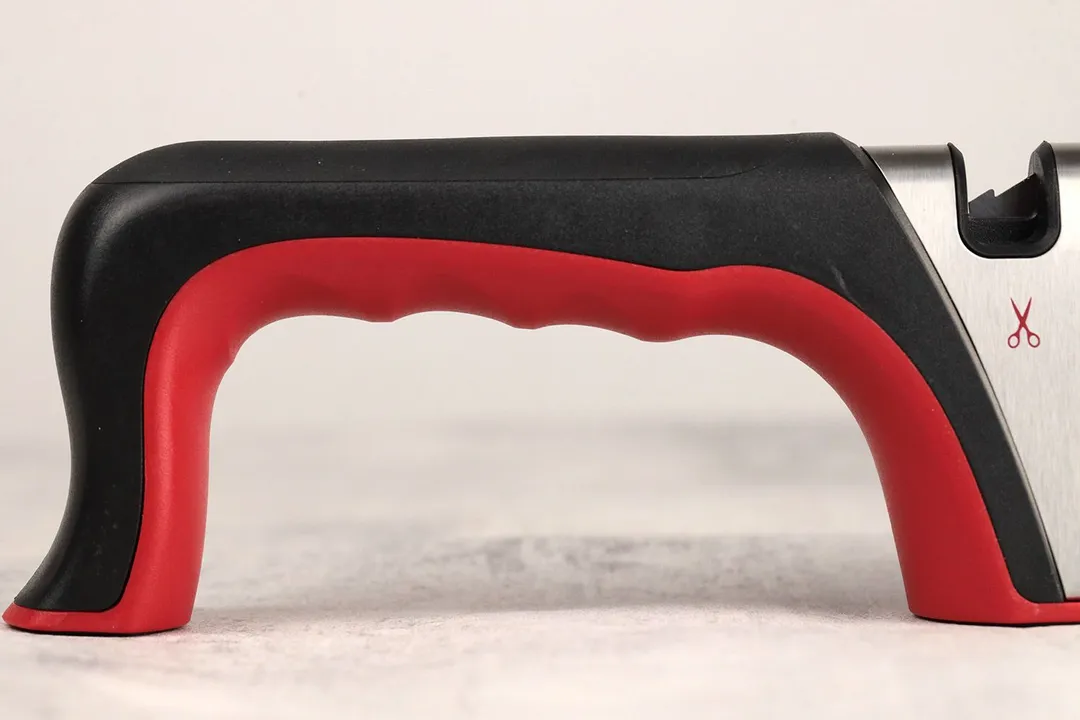
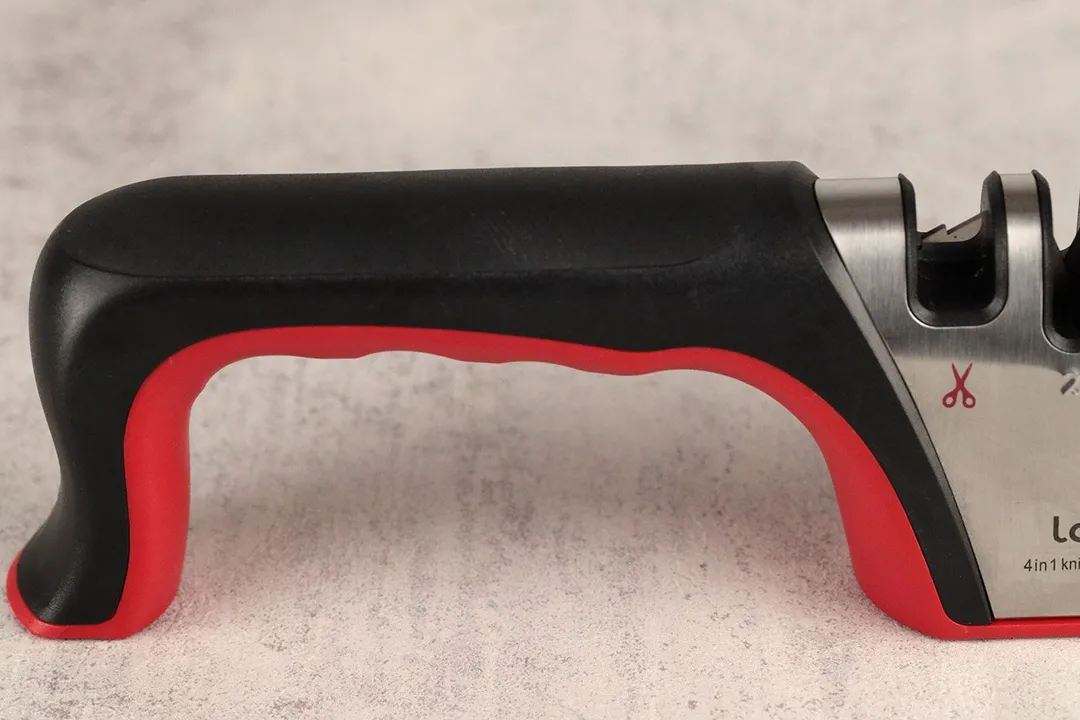
Usability
Slot Arrangement
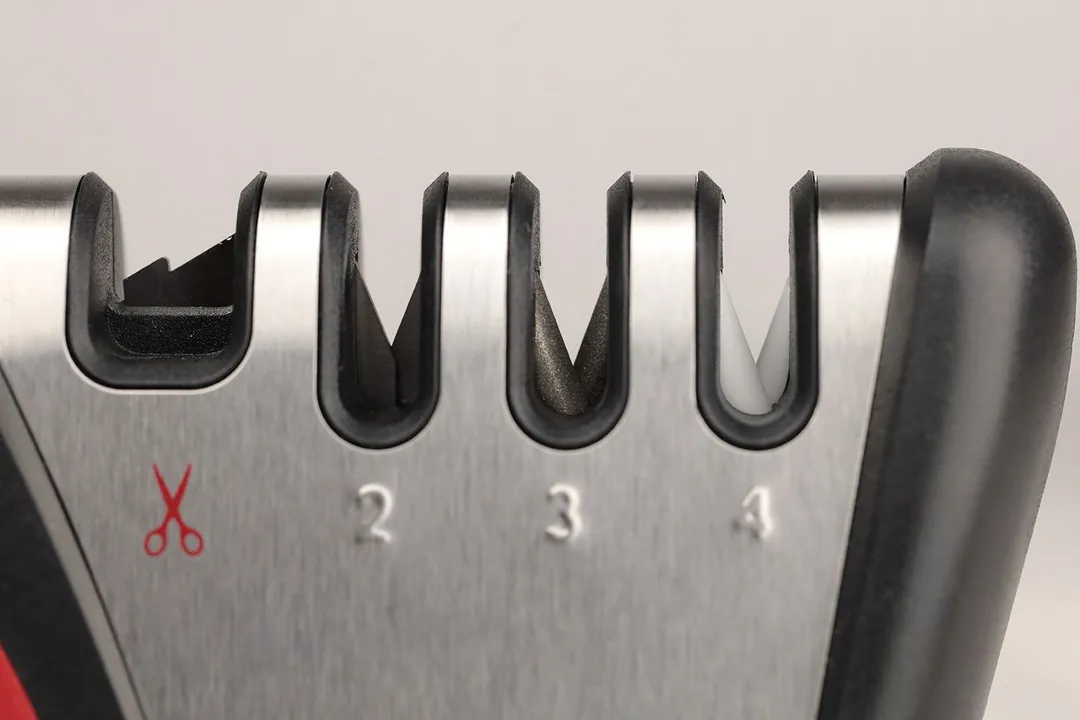
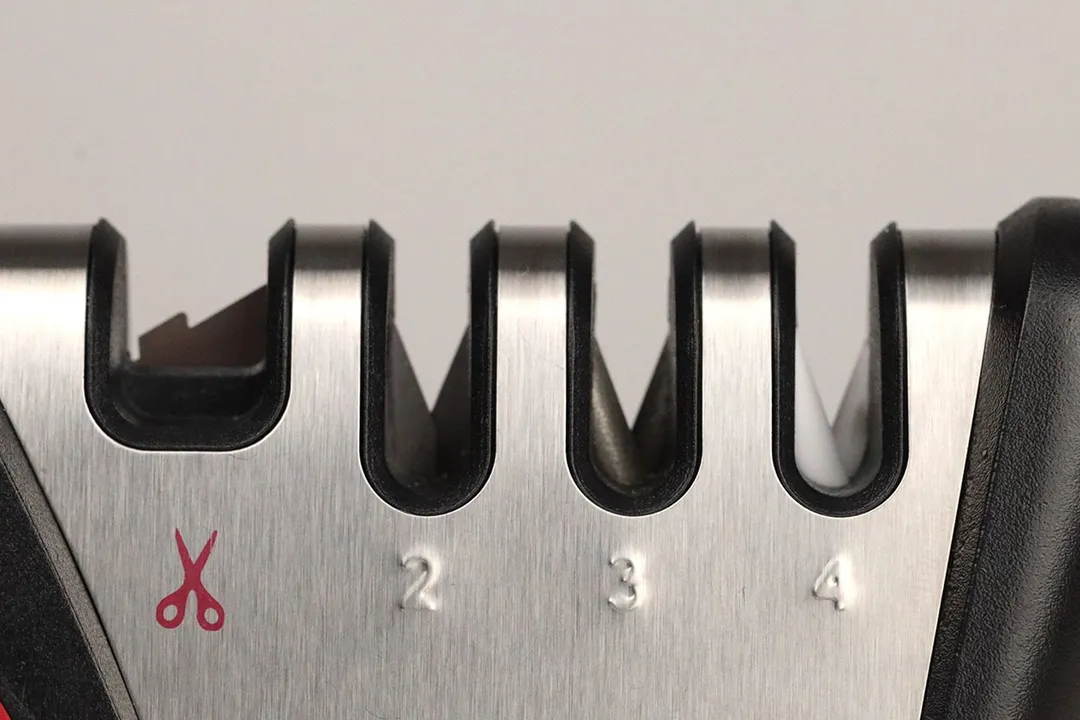
Insertion
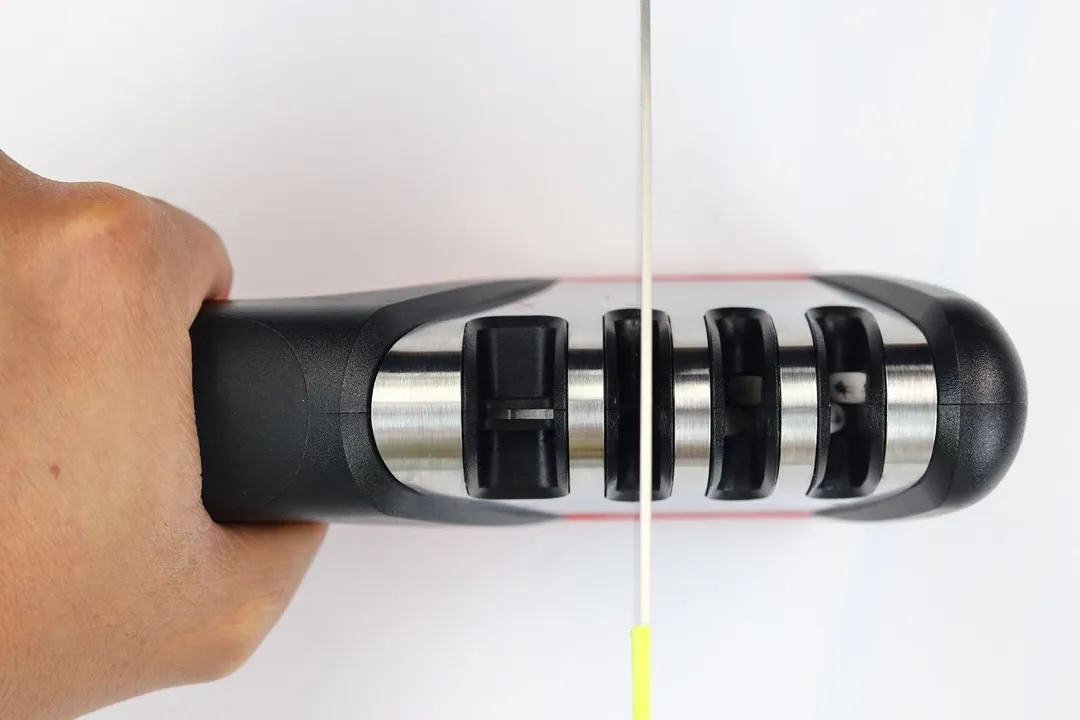
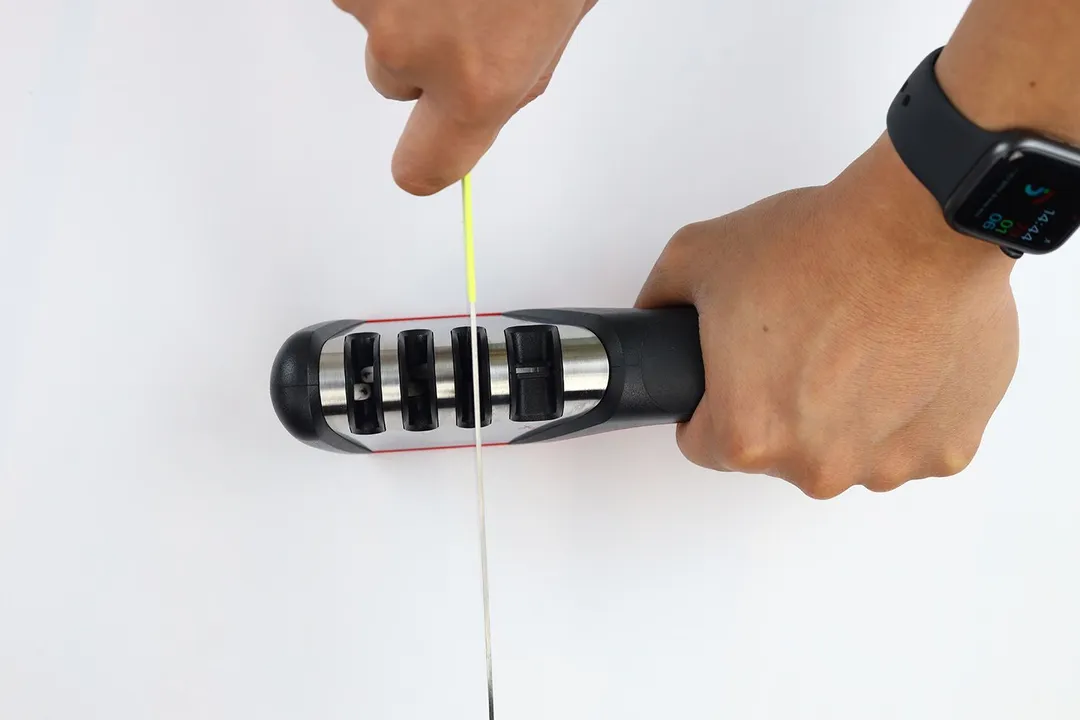
Pulling Through
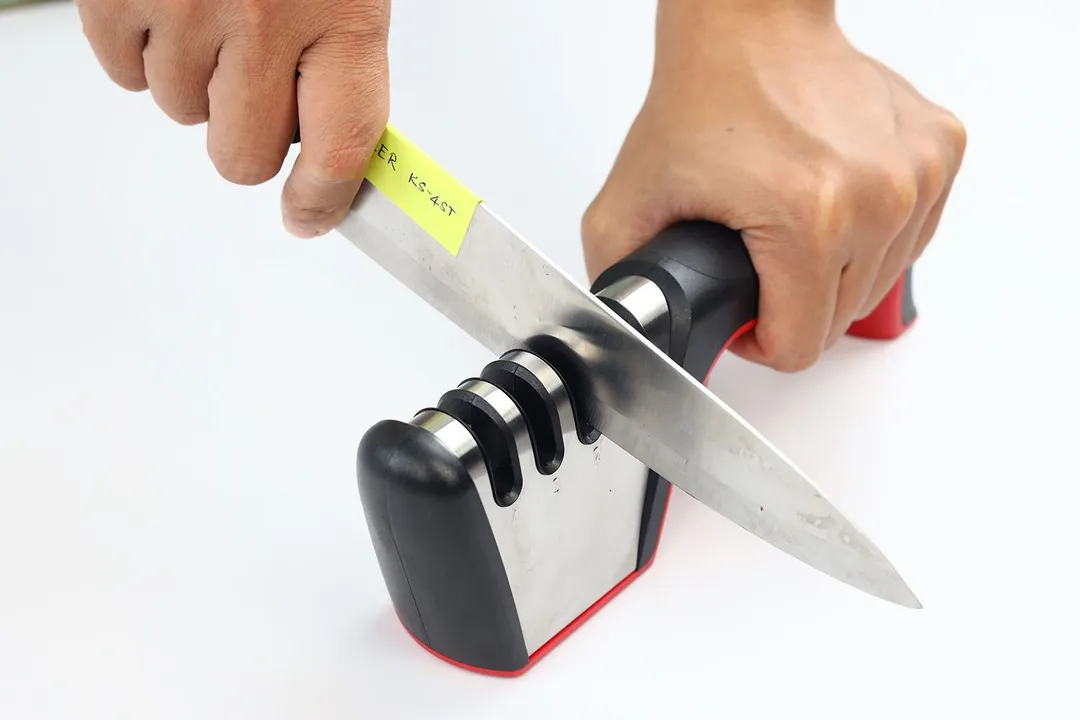
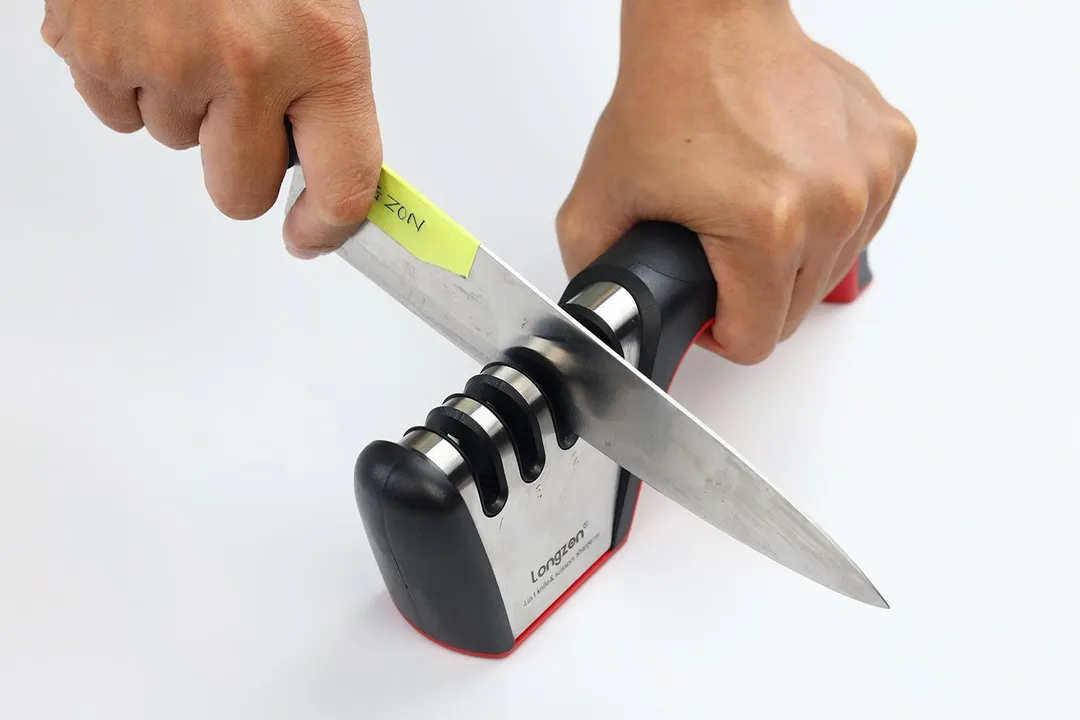
Stability on a Clean Surface
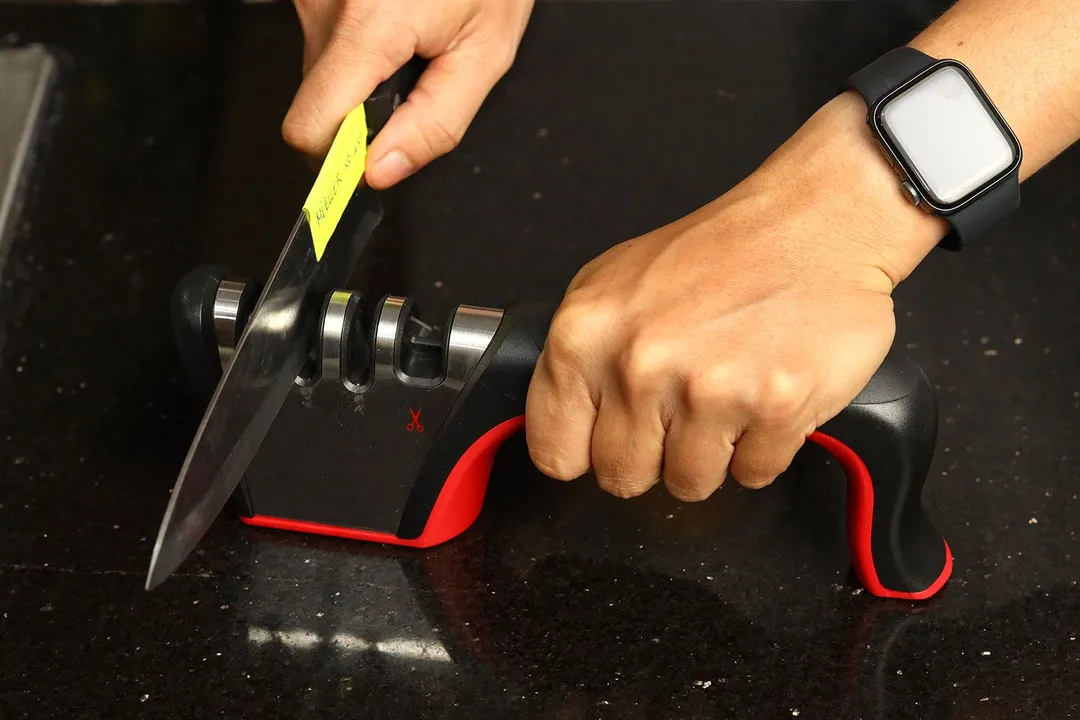
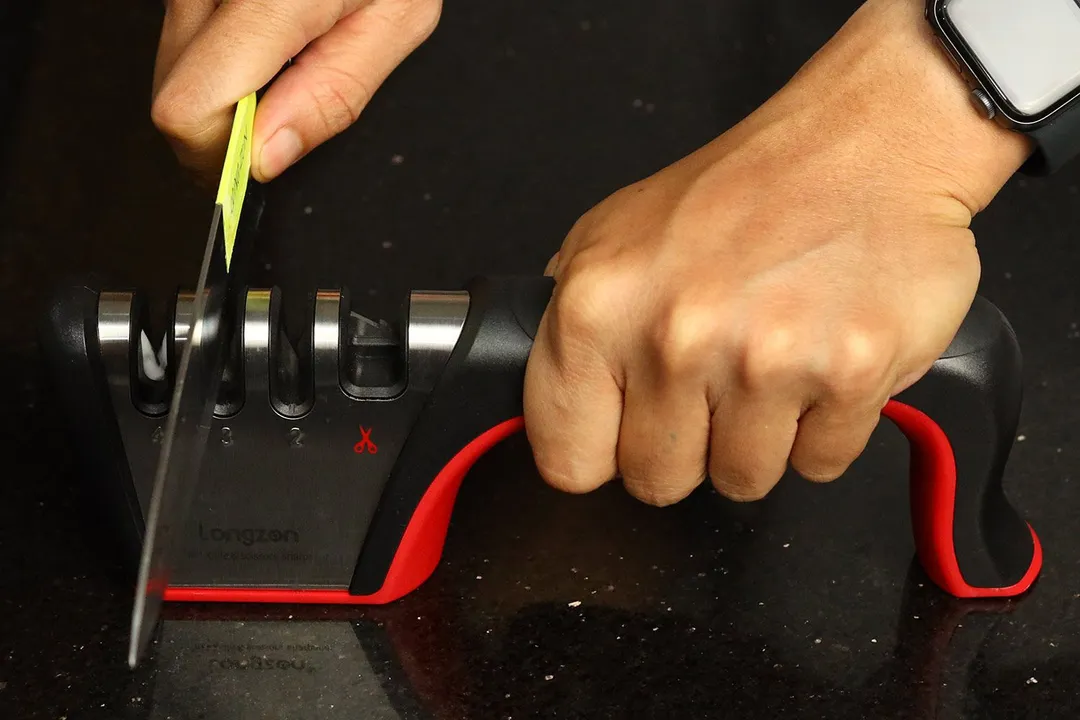
Stability on a Wet and Dirty Surface

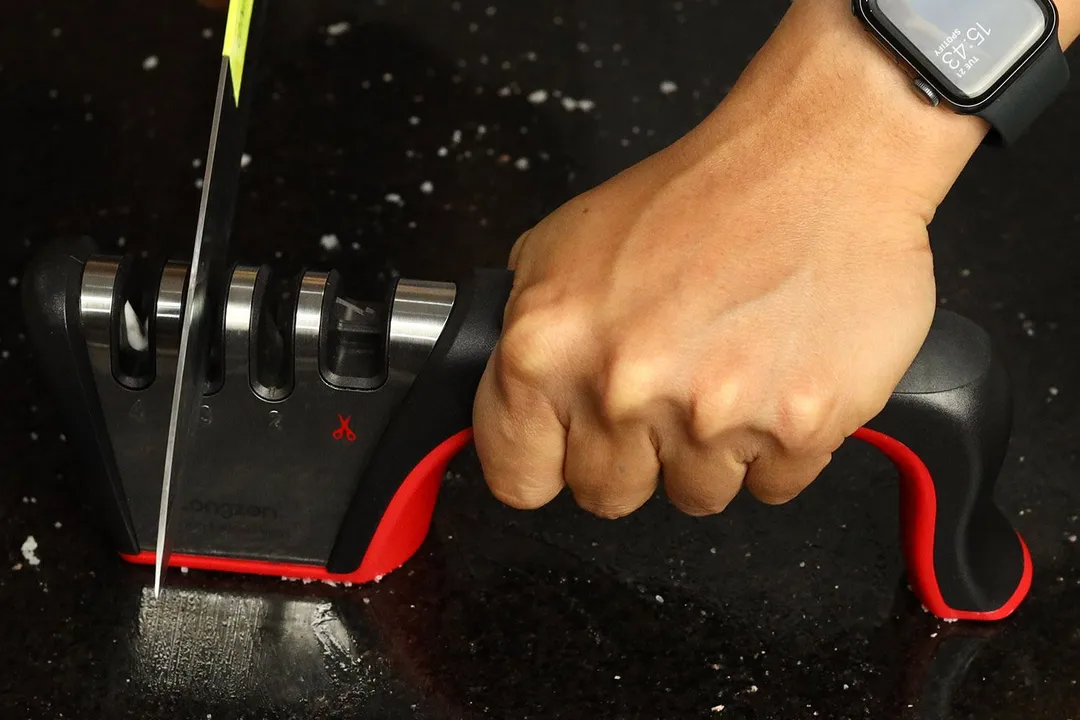
Behind the Comparison
Anh Ngo is a writer with 9 years experience at different media outlets, covering from public news and events to product testing and analysis. At HealthyKitchen101, she works across different departments, communicating closely with its network of writers, editors, and health, tech, and search engine experts to provide a meaningful and pleasant reading experience for visitors.
Lap is Head of the Research, Testing, and Review Team (RTR Team) at HealthyKitchen101.com, where he directs and supervises the testing of kitchen gadgets and appliances.
Nguyen Ntk is a graphic designer, photographer, and videographer whose philosophy centers around respecting and celebrating the beauty of reality. Through his lenses, Nguyen strives to capture the true essence of objects and events, showcasing and highlighting authentic features without distortion or exaggeration.



